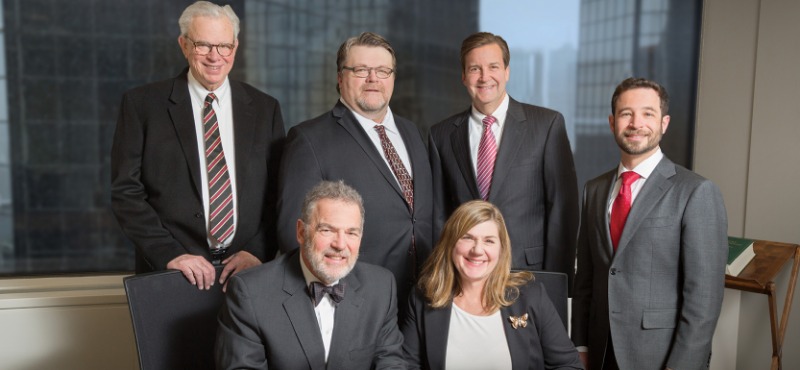In Colorado legal circles, ski-accident litigation and the law firm of Chalat Hatten & Banker go hand-in-hand—as it has been since the 1980s, when Jim Chalat first began trying cases related to the recreational skiing industry in the state. In fact, partner Linda Chalat describes him with a chuckle as the “original ski lawyer,” an apt description for a plaintiffs’ attorney who skied competitively in college at the University of Michigan and who found the practice after the Colorado Bar Association asked him, nearly three decades ago now, to write an article on the subject. About the same time, the Chalats began their working relationship with John Purvis and Bill Gray, on a case involving a gondola accident at a ski resort in Vail. That relationship evolved over the years into an of-counsel relationship between Chalat Hatten & Banker and Purvis Gray Thomson. In place now for a little more than a year, the firms team up on their most difficult, fact-intensive, high-damage cases.
But while Chalat Hatten & Banker, at least, is probably most closely associated with ski-accident litigation, Linda Chalat notes that both firms can do much, much more, and have directly benefitted from the other’s experience. “What we’ve found is that the old adage of two heads being better than one really does apply here,” says Ms. Chalat, a repeat member of the Best Lawyers list and a Super Lawyer who has also been named by The Denver Post as one of the top attorneys in Colorado. Indeed, together they can handle plaintiffs’ personal injury litigation on a broad spectrum—capabilities that are difficult to match on a regional scale.
Those capabilities include cases involving traumatic brain injury, pedestrian accidents and injuries sustained from using public transportation and other motor vehicles, defective products, medical malpractice, legal malpractice, bad faith claims, and more. Both firms also receive attorney referrals, which is a nod to their extensive experience and success. But Ms. Chalat also notes that the scope of experience does not imply that all cases are a good fit for either firm; the lawyers are best trained and suited to those matters demanding personal, bespoke representation. This approach has resulted in five of the partners between the two firms being named to the Best Lawyers list in 2017.
“The firms team up on their most difficult, fact-intensive, high-damage cases.”
“We early on chose a business model that allowed us to attract the types of cases that both require and benefit from personalized attention and working collaboratively with our clients,” Ms. Chalat says. “There are any number of personal injury firms that will cast a wide net through their advertising in order to take any and all comers, but they tend to handle their cases in a much more rote fashion. We’re on the other end of the spectrum.” What that looks like in a practical sense: When potential clients call, a real person answers the phone, and if it’s appropriate, they are passed directly to a lawyer. “That might seem like a minor detail, but it is a real differentiator among firms that handle personal injury litigation,” she says. “It means that someone is thinking about their case from the minute the process begins.”
That selectivity and true boutique size—there are just seven attorneys between the two firms—offers tangible benefits to clients, who are assured that their cases take top priority from inception through resolution. An intangible? Representation by attorneys who have made it their collective lives’ work to take entire industries and establishments to task when an individual pays the price for their negligence. “Our clients approach us for help during what is often the worst experience of their lives,” says Jim Chalat, a member of several professional and legal organizations (including the prestigious American Board of Trial Advocates) who is a 2017 Best Lawyers “Lawyer of the Year” for plaintiffs’ professional malpractice law. “To do everything we can to make our clients whole again—it’s a personal mission for me and my partners, but I’m fine with that. None of us would be doing this work if it wasn’t.”
Purvis is in vehement agreement. “It’s not an exaggeration to say that people’s lives are at stake,” says Purvis, who has been named to the Best Lawyers list since 1989. “Their ability to provide for their families, receive medical care in the aftermath of their injuries, and just get by on a day-to-day basis are the real issues they face.”
















